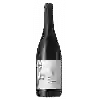
Winery Jeff CarrelChatgris
In the mouth this white wine is a powerful.
This wine generally goes well with vegetarian, poultry or lean fish.
Taste structure of the Chatgris from the Winery Jeff Carrel
Light | Bold | |
Dry | Sweet | |
Soft | Acidic |
In the mouth the Chatgris of Winery Jeff Carrel in the region of Languedoc-Roussillon is a powerful.
Food and wine pairings with Chatgris
Pairings that work perfectly with Chatgris
Original food and wine pairings with Chatgris
The Chatgris of Winery Jeff Carrel matches generally quite well with dishes of pasta, vegetarian or poultry such as recipes of pasta with sausage, magic cake cheese quiche or chicken on a bed of summer vegetables.
Details and technical informations about Winery Jeff Carrel's Chatgris.
Discover the grape variety: Ravat blanc
Interspecific crossing between Seibel 5474 (Seibel 405 x Seibel 867) and Chardonnay by Jean-François Ravat. After 1945, it was already considered a quality grape variety, and is now listed in the Official Catalogue of Vine Varieties, list A1.
Last vintages of this wine
The best vintages of Chatgris from Winery Jeff Carrel are 2019
Informations about the Winery Jeff Carrel
The Winery Jeff Carrel is one of of the world's great estates. It offers 91 wines for sale in the of Languedoc to come and discover on site or to buy online.
The wine region of Languedoc
Languedoc (formerly Coteaux du Languedoc) is a key appellation used in the Languedoc-Roussillon wine region of southern France. It covers Dry table wines of all three colors (red, white and rosé) from the entire region, but leaves Sweet and Sparkling wines to other more specialized appellations. About 75% of all Languedoc wines are red, with the remaining 25% split roughly down the middle between whites and rosés. The appellation covers most of the Languedoc region and almost a third of all the vineyards in France.
The wine region of Languedoc-Roussillon
Languedoc (formerly Coteaux du Languedoc) is a key appellation used in the Languedoc-Roussillon wine region of southern France. It covers Dry table wines of all three colors (red, white and rosé) from the entire region, but leaves Sweet and Sparkling wines to other more specialized appellations. About 75% of all Languedoc wines are red, with the remaining 25% split roughly down the middle between whites and rosés. The appellation covers most of the Languedoc region and almost a third of all the vineyards in France.
The word of the wine: Roundup
Woody part of the grape bunch to which the berries are attached.














